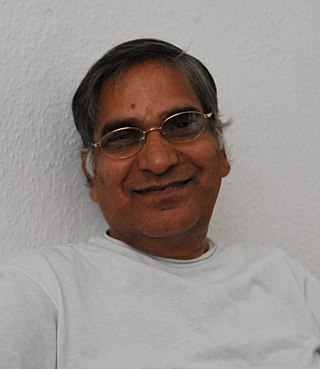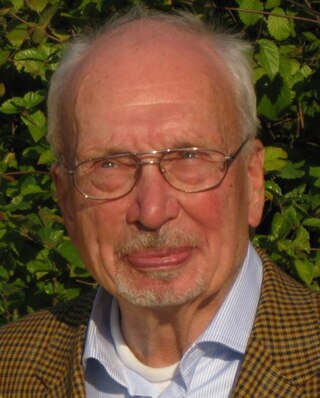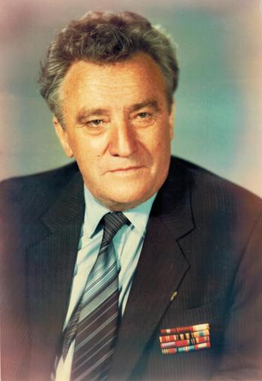
Reflection seismology is a method of exploration geophysics that uses the principles of seismology to estimate the properties of the Earth's subsurface from reflected seismic waves. The method requires a controlled seismic source of energy, such as dynamite or Tovex blast, a specialized air gun or a seismic vibrator. Reflection seismology is similar to sonar and echolocation.

The Society of Exploration Geophysicists (SEG) is a learned society dedicated to promoting the science and education of exploration geophysics in particular and geophysics in general. The Society fosters the expert and ethical practice of geophysics in the exploration and development of natural resources, in characterizing the near-surface, and in mitigating earth hazards. As of November 2019, SEG has more than 14,000 members working in more than 114 countries. SEG was founded in 1930 in Houston, Texas but its business office has been headquartered in Tulsa, Oklahoma since the mid-1940s. While most SEG members are involved in exploration for petroleum, SEG members also are involved in application of geophysics methods to mineral exploration as well as environmental and engineering problems, archaeology, and other scientific endeavors. SEG publishes The Leading Edge (TLE), a monthly professional magazine, Geophysics, a peer-reviewed archival publication, and Interpretation, a peer-reviewed journal co-published by SEG and the American Association of Petroleum Geologists.
Jon F. Claerbout is an American geophysicist and seismologist. He is the Cecil Green Professor Emeritus of Geophysics at Stanford University. Since the later half of the 20th century, he has been a leading researcher and pioneered the use of computers in processing and filtering seismic exploration data, eventually developing the field of time series analysis and seismic interferometry, modelling the propagation of seismic waves.
The Jackson School of Geosciences at The University of Texas at Austin unites the Department of Earth and Planetary Sciences with two research units, the Institute for Geophysics and the Bureau of Economic Geology.
Liviu Constantinescu was a Romanian geophysicist, professor of geophysics, member of the Romanian Academy. He was the cofounder, together with Sabba S. Ștefănescu, of the Romanian school of geophysics.
Ronald M. Clowes, CM is a professor specializing in seismic and other geophysical studies of the Earth's lithosphere. For his work he has been appointed a member of the Order of Canada.
Andrew S. Long is an Australian geophysicist. He has a PhD in geophysics (1996) from the University of Western Australia, and a post-doctoral term at Stanford University. He is a leader in the application of geophysical technologies to exploration for oil and gas in marine areas, and has written and presented several papers at the Society of Exploration Geophysicists (SEG), the European Association of Geoscientists and Engineers (EAGE), the Australian Society of Exploration Geophysicists (ASEG), the Australian Petroleum Production & Exploration Association (APPEA) and many other international conventions and journals.
Öz Yılmaz is the chief technology officer of GeoTomo LLC and the founder of Anatolian Geophysical. He is the author of Seismic Data Processing and Seismic Data Analysis, the principal reference volumes for the seismic processing industry.
Vijay Prasad Dimri is an Indian geophysical scientist, known for his contributions in opening up a new research area in Earth sciences by establishing a parallelism between deconvolution and inversion, the two vital geophysical signal processing tools deployed in minerals and oil and gas exploration. In 2010, the Government of India awarded him with the Padma Shri, India's fourth highest civilian award, for his contributions to the fields of science and technology.
Robert E. Sheriff was an American geophysicist best known for writing the comprehensive geophysical reference, Encyclopedic Dictionary of Exploration Geophysics. His main research interests included the seismic detailing of reservoirs, in 3-D seismic interpretation and seismic stratigraphy, and practical applications of geophysical methods. Hua-Wei Zhou, Department Chair of the Department of Earth and Atmospheric Sciences, said about Sheriff: “…a giant figure in the world of exploration geophysics… When I think about Bob, a number of key words pop up in my mind: kindness, honesty, hardworking, seeking perfection, generosity and wisdom.”

The Chamber of Geophysical Engineers of Turkey (CGET) is a nonprofit organization found in 1986 and promotes the expert and ethical practice of geophysics in the exploration and development of natural resources, in characterizing the near-surface, and in mitigating earth hazards. While most CGET members are involved in engineering problems and groundwater explorations, CGET members also are involved in application of geophysics methods to mineral and petroleum explorations, archaeological researches, seismology and other scientific activities.

Sri Niwas (1946–2012) was an Indian geophysicist and a professor at the Department of Earth Sciences of the Indian Institute of Technology, Roorkee. He was known for his researches on the Inversion of Geophysical Data. He was an elected fellow of all the three major Indian science academies viz. Indian National Science Academy, Indian Academy of Sciences, National Academy of Sciences, India as well as Indian Geophysical Union and was an elected member of the Association of Exploration Geophysicists. The Council of Scientific and Industrial Research, the apex agency of the Government of India for scientific research, awarded him the Shanti Swarup Bhatnagar Prize for Science and Technology, one of the highest Indian science awards for his contributions to Earth, Atmosphere, Ocean and Planetary Sciences in 1991.
Sankar Kumar Nath is an Indian geophysicist, seismologist and the vice chancellor of the University of Burdwan. He was previously a senior professor at the Indian Institute of Technology Kharagpur. He is known for his geotomographical studies and is an elected fellow of the Indian National Academy of Engineering, Indian Geophysical Union and the National Academy of Sciences, India, The Council of Scientific and Industrial Research, the apex agency of the Government of India for scientific research, awarded him the Shanti Swarup Bhatnagar Prize for Science and Technology, one of the highest Indian science awards for his contributions to Earth, Atmosphere, Ocean and Planetary Sciences in 2002.

Reinhard Bortfeld was a German geophysicist.

Evsey Iosifovich Galperin was a Soviet seismologist and professor at the Institute of Earth Physics of the USSR Academy of Sciences. He was inventor of the symmetric triaxial seismometer design, today known as the Galperin configuration.
Dumitru Enescu. was a Romanian geophysicist and engineer elected honorary member of the Romanian Academy in 2011. He was born in Drajna de Sus, and died in Bucharest, aged 82. Dumitru Enescu has made important scientific contributions to the development of seismology in Romania.

Amos Nur was an American- Israeli geophysicist and professor emeritus at Stanford University in California. He was educated in Israel.
Michael Semenovich Zhdanov is a geophysicist, academic and author. He is a Distinguished Professor in the Department of Geology and Geophysics at the University of Utah, Director of the Consortium for Electromagnetic Modeling and Inversion (CEMI), as well as the Founder, chairman and CEO of TechnoImaging.







